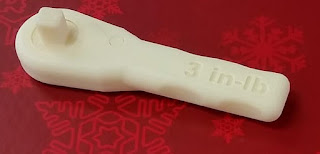 |
| Larry's knife |
In the beginning, prehistoric humans each made their own tools. If you needed a flint scraper to clean a hide, you made it yourself, chipping the edge to make it sharp. And then you used it, after cornering that wildebeest and bringing it down. You created and used your own tools, furthering the chief goal of survival by obtaining food and maintaining shelter and defending the homeland.
But over time, it became clear that one member of the clan
was better at making scrapers and knives than anyone else. Let’s call him
Larry. As the clan grew into a tribe, the chief appointed Larry to make things.
Relieved of hunting duties, Larry churned out the best flint scrapers and
knives in the valley. He traded them for food – the hunters and gatherers fed
him in exchange for his sharp, sturdy tools.
As families grew to clans, clans to tribes, and tribes to states,
specialization became necessary and common. Hunters hunted. Fishermen fished. Farmers
farmed. Weavers wove. Toolmakers made. And traders traded.
The basis for human production and commerce had been
established.
The Deutsches Museum in Munich, Germany, chronicles this history
of human activity in a wonderful series of exhibits. The evolution from
early axes and bowed drills to steam powered lathes to the complex computer
controlled milling machines of today is detailed. The exhibits make one thing
clear – humans have excelled in learning how to make things with spectacular
precision and in large quantities.
We have become exceedingly clever at removing material to
achieve a desired result. This is what we are used to. It is called subtractive
manufacturing. To make a wrench, we can start with a blank of steel, cut or
drill out portions we don’t want, and finish the surfaces all to a precise
plan. The wrench emerges from the block by the application of energy and human
intelligence. In similar fashion, Larry’s scrapers emerged from chunks of
flint. Michelangelo’s forms emerged from blocks of marble. And Toyota Camrys
emerge from piles of raw materials.
The common thread in all this is the design, the plan, the
vision, the details of the thing to be built.
We can extract out this essence of the thing, which
describes it in precise detail, and represent it in a computer file. The
dimensions, the angles, the faces, all precisely specified, the thing now
exists, born from our imagination. All we need to do is manufacture it.
But instead of our historical approach of cutting and
drilling and milling, we can now do something novel.
Three-dimensional (3D) printing is a technique for
manufacturing things. Rather than subtractive, it is additive, with thin layers
successively laid down in accordance with the plan, the 3D model, so that the
thing slowly grows into existence. It seems like magic, but only because we are
so accustomed to milling and drilling. But in a way, it is more natural. After
all, cabbages and robins and human beings are all constructed according to a plan
(their DNA) by addition, not subtraction, of materials.
While 3D printing is relatively new, it is rapidly gaining capability.
Entrepreneurs at universities and start-ups are competing to develop
improvements. An Australian company recently announced a new method they claim
will be 25-100 times faster than existing technologies. This will be a race,
and it will accelerate enormously in our lifetimes, driven by advancing
computer power and materials science. It is human magic.
NASA is onboard. In December, the agency emailed a wrench to
the International Space Station. The design file of a ratchet wrench was
transmitted to the station where it was downloaded to a 3D printer. Four hours
later, the wrench emerged. Imagine the importance of this to a future moon base
or Mars colony, where the delay of a resupply mission might be months or years.
 |
| NASA 3-D printed ratchet wrench |
How about obtaining a replacement part for an old weed whacker
that’s long out of production? No problem, Lowe’s Home Improvement has
announced that they will soon install 3D printers in select stores. In addition
to predefined design files, you will also be able to send your own computer
models to Lowe’s for printing, and drop by later to pick up the finished product.
We are coming full circle. Soon we might each make our own
stuff, if we so desire, unique to our individual wants and wishes. Larry would
be pleased.

No comments:
Post a Comment